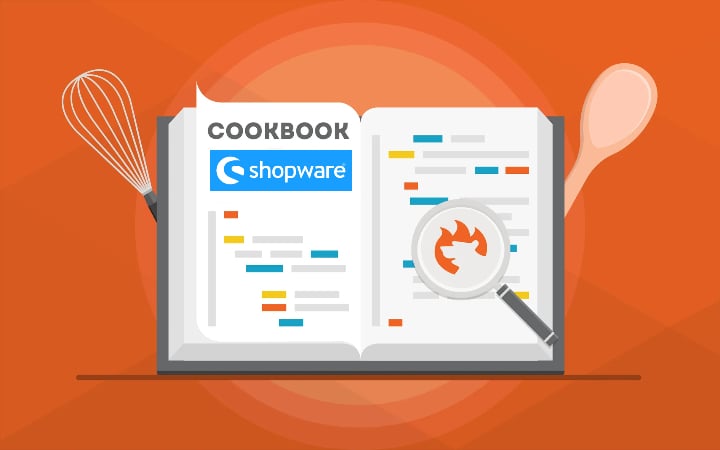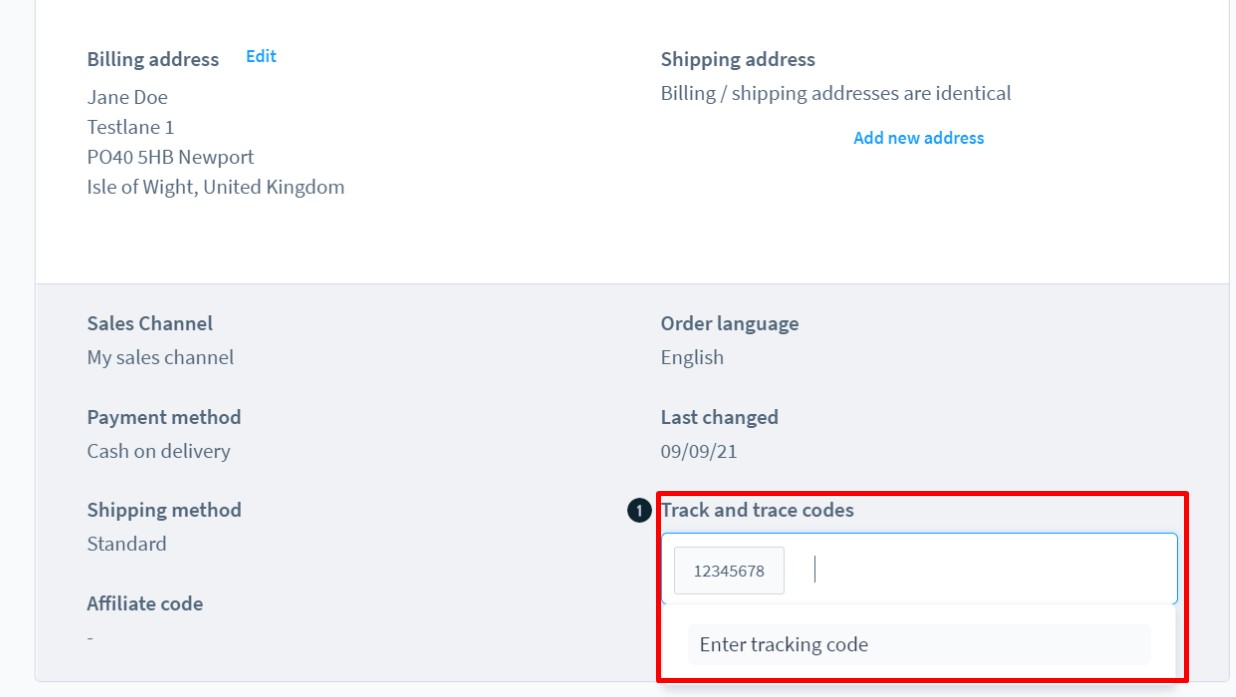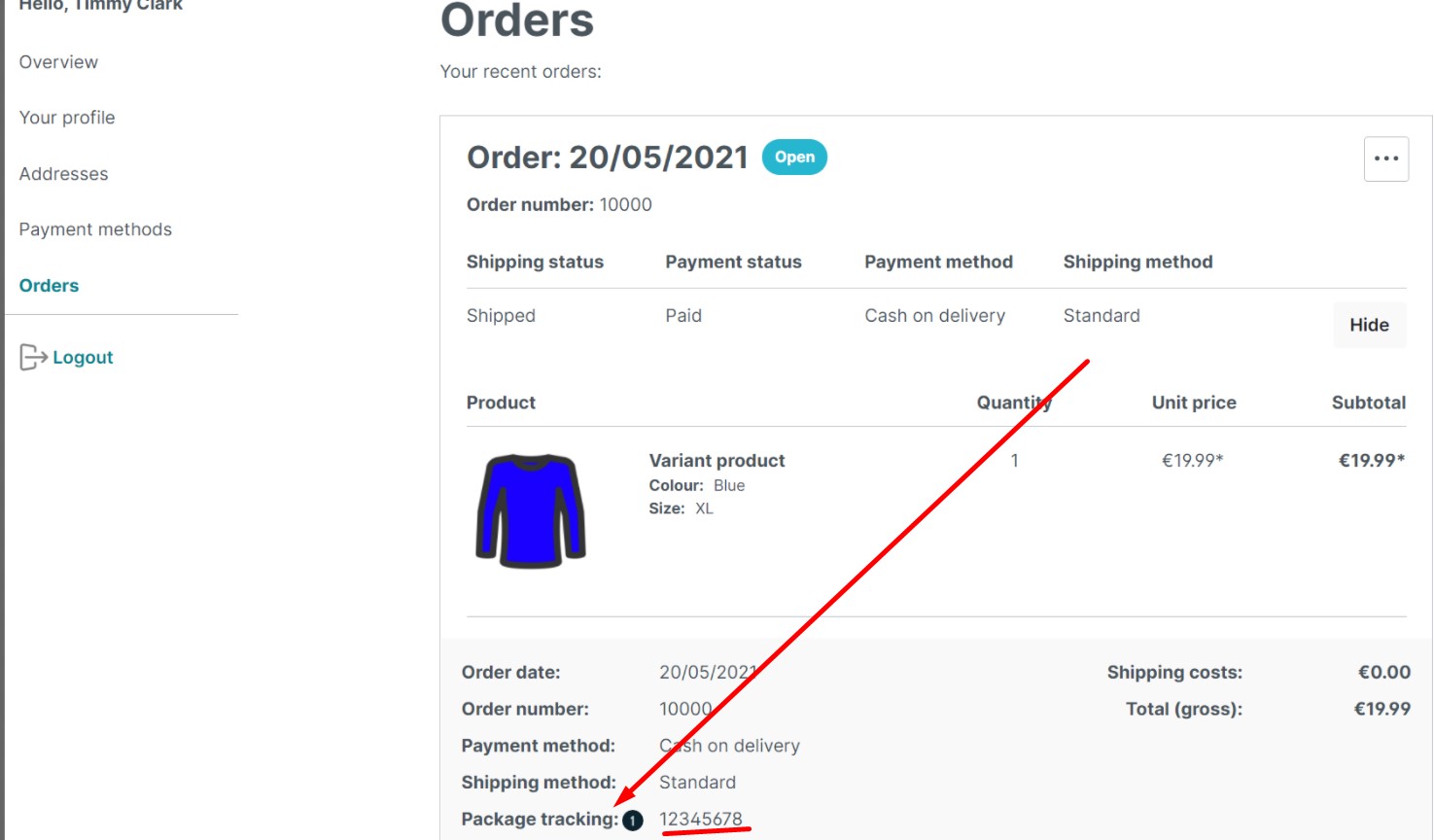How To Implement Order Tracking In Shopware 6

Shopware 6 provides the ability to implement order tracking for your online customers. The platform lets you build tracking links into email templates associated with entry delivery statuses. Thus, your customers get the information regarding their order shipping. You will learn how to integrate and use the tracking function on your Shopware 6 website. So, how to implement order tracking in Shopware 6? Let’s find the answer. You can find more useful materials about Shopware 6 here.

Note that we provide Shopware integration with external platforms. Contact our support for further information or try our Improved Import, Export & Mass Actions.
Table of contents
- 1 Get the tracking link
- 2 Build the tracking link into the email template
- 3 Enhance order details with the tracking number
- 4 How to import orders with tracking details to Shopware 6
- 5 Shopware 6 Essentials FAQ
- 5.1 How to create a Shopware account?
- 5.2 What about a Shopware ID?
- 5.3 What is Shopware master data?
- 5.4 How to add a new Shopware shop?
- 5.5 How to add a payment method to your Shopware account?
- 5.6 How to create a deposit in Shopware?
- 5.7 How to purchase Shopware extensions?
- 5.8 How to get support in Shopware?
- 5.9 How to automate import and export processes in Shopware 6?
- 5.10 How to migrate to Shopware 6?
- 5.11 How to integrate Shopware 6 with external systems?
Get the tracking link
First of all, you need to find out what the link to the shipment is to implement order tracking in Shopware 6. Check the logistics company whose shipping method has been selected in the order:
- Visit the online portal of the respective company;
- Specify the shipment number;
- Get the tracking link.
Let’s assume that a customer selected DHL as a shipping provider. Thus, the tracking link looks as follows:
|
1 |
https://www.dhl.de/en/privatkunden/pakete-empfangen/verfolgen.html?piececode=32343638 |
Where the actual tracking code is ‘32343638’.
Build the tracking link into the email template
Now, you have to build the tracking link into the email template to implement the Shopware 6 order tracking:
- Go to your email templates (Settings -> Email Templates);
- Paste the tracking link into the mail template. For instance, you can edit the “Entry delivery status: shipped” template:
- Open the template;
- Modify the mail text as described below.
Shopware 6 lets you add a tracking link to the template via a Plain Text window (1) as follows:
|
1 2 3 4 5 |
{% for delivery in order.deliveries %} {% for trackingCode in delivery.trackingCodes %} https://www.dhl.de/en/privatkunden/pakete-empfangen/verfolgen.html?piececode={{ trackingCode }} {% endfor %} {% endfor %} |
If you prefer the HTML (2) format, modify the template with the following snippet:
|
1 2 3 4 5 |
{% for delivery in order.deliveries %} {% for trackingCode in delivery.trackingCodes %} Sendungsverfolgung: <a href="https://www.dhl.de/en/privatkunden/pakete-empfangen/verfolgen.html?piececode={{ trackingCode }}">{{ trackingCode }}</a></br> {% endfor %} {% endfor %} |
Note that the variable for the tracking number “trackingCode” is output.
Enhance order details with the tracking number
The final step of implementing order tracking on your Shopware 6 store requires you to add the tracking number to order details in the admin. You can do that as follows:
- Go to your Shopware 6 administration;
- Find the corresponding order and open it;
- Proceed to the Track and Trace Codes window (1);
- Specify one or more tracking numbers there.
After that, your prospect will see the tracking number (1) of their order in a customer account under the Orders tab, as illustrated below:
How to import orders with tracking details to Shopware 6
If you need to transfer already existing orders with tracking codes to your Shopware 6 store, use the . Its Magento 2 counterpart already knows shipment auto-generation upon Magento 2 order tracking code import and export. Thus, you always stay informed on each track created in the store with automatic email notifications. The extension tracks shipments and generates shipments and invoices with a job run. Please, contact our support regarding the same functionality for Shopware 6.
Shopware 6 Essentials FAQ
How to create a Shopware account?
You need to create a Shopware account before working with orders and implementing order tracking. Visit the registration page, hit the Register Now link, and fill in the form to create a new account. After receiving a confirmation email, follow the instructions provided in it.
What about a Shopware ID?
The system requires no additional steps here. You will get your Shopware ID upon registration automatically.
What is Shopware master data?
Under Shopware master data, we assume all the information about your company and business, such as physical addresses, phone numbers, emails, etc.
How to add a new Shopware shop?
A Shopware shop lets you connect shipping providers and implement tracking options. You can add a new ecommerce website in your merchant area: click the corresponding link, choose the type of your new shop (a cloud storefront or an on-premise installation), and provide all the information the system requires.
How to add a payment method to your Shopware account?
You need a payment method associated with your Shopware account that will be used for internal purposes. You can add it under Basic Information -> Accounting. Select PayPal, credit card, or direct debit as a way to transfer funds to your account.
How to create a deposit in Shopware?
Now, when you have a working payment method, it is possible to create a deposit for purchasing extensions and themes. Go to your Merchant Area -> Shops, choose a shop to provide funds to, click Open Account Details, and transfer a deposit that covers the amount of your purchase.
How to purchase Shopware extensions?
Proceed to the Plugin Manager to purchase extensions and themes for Shopware 6. You can also do that on the Shopware Marketplace. In both cases, you need to create a deposit in advance that equals the amount of your future purchase. Next, select a tool you want to buy and complete the checkout.
How to get support in Shopware?
You can contact Shopware regarding license inquiries via info@shopware.com or +49 2555 9288 50. If you need help with accounting and financial inquiries, use these options: financial.services@shopware.com and +49 2555 9288 510.
How to automate import and export processes in Shopware 6?
You need to install the help of the Improved Import, Export & Mass Actions extension to automate data transfers to and from your Shopware website. The module automates recurring data transfers with the help of update schedules. Also, it offers mapping presets that edit external data automatically, following the Shopware requirements.
How to migrate to Shopware 6?
If you need to migrate to Shiopware 6, also use the Improved Import, Export & Mass Actions module. The extension lets transfer data from other e-commerce systems or Shopware’s previous versions. Note that we also offer export solutions for systems like Magento and Shopify, so you can simplify your data transfers between them and Shopware. for more information.
How to integrate Shopware 6 with external systems?
Installing the Improved Import, Export & Mass Actions plugin is also a good idea when you need to integrate Shopware 6 with ERPs, CRMs, accounting tools, and other similar platforms. The module can help you automate repetitive import and export processes due to schedules and mapping presets. The presets help you modify data according to the requirements of your Shopware store during import as well as follow the rules of the connected platform during export.












